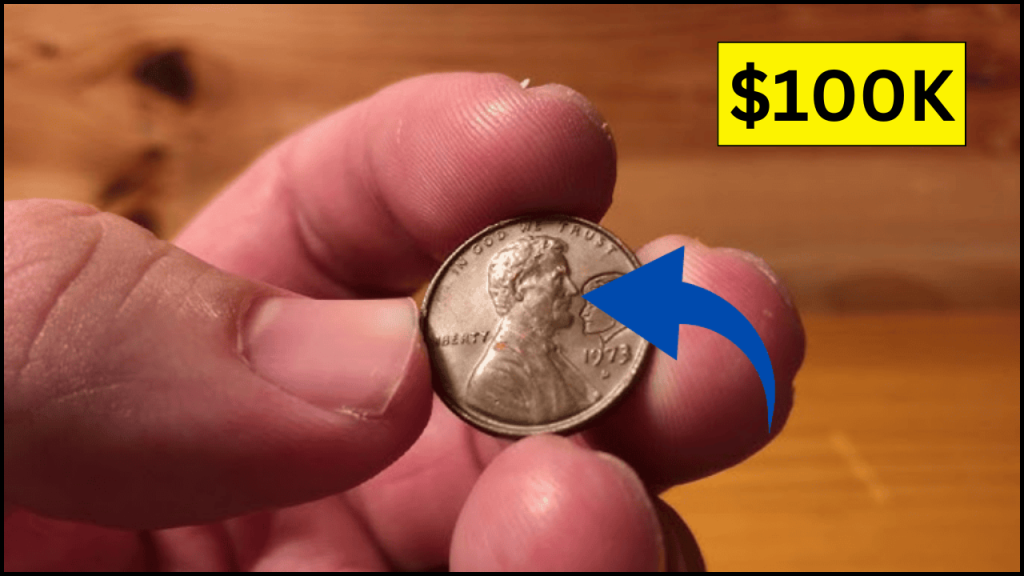
Most of us see pennies as small change, often forgotten in pockets, jars, or tossed into tip jars. But what if one of those pennies could be worth $100,000 or more? Sounds unbelievable, right? Well, welcome to the fascinating world of coin collecting, where the Lincoln Wheat Penny is more than just a coin—it’s a treasure.
A Penny with a Big History
The Lincoln Wheat Penny made its first appearance in 1909. It was a special coin, created to honor the 100th birthday of Abraham Lincoln. This was also the first time a real person’s face appeared on a regular U.S. coin. Until then, coins featured symbols like Lady Liberty.
The design was done by a sculptor named Victor David Brenner. On the front, it showed Lincoln’s face. On the back, two wheat stalks framed the words “One Cent.” This wheat design stayed the same until 1958, making the coins from this time easy to spot.
Simple in design but rich in meaning, this penny became a favorite among collectors. And as it turns out, some versions of it are incredibly rare and valuable.
The Famous 1909-S VDB Penny
One of the most valuable Wheat Pennies is the 1909-S VDB. Let’s break that down:
- 1909: The year it was made.
- S: Minted in San Francisco.
- VDB: The designer’s initials.
The initials caused a bit of a stir. Some people thought they were too big and bold on the back of the coin. Because of the criticism, the U.S. Mint quickly removed them. But before that happened, only 484,000 coins were made with the VDB initials.
Today, finding one of these pennies in good condition could easily get you over $100,000. That’s a big reward for something so small.
The Lincoln Wheat Penny, Valued at $815K, Still in Circulation
The Lincoln Wheat Penny Valued at $100K, Still in Circulation
The 1943 Copper Penny: A Wartime Mistake
During World War II, the U.S. needed copper for the war effort. So in 1943, pennies were made out of steel coated with zinc. But a few copper coin blanks from 1942 were accidentally left in the minting machines. The result? About 20 to 40 copper pennies were struck in 1943.
These weren’t supposed to exist, which makes them extremely rare. If you happen to find one, you could be looking at a coin worth over $100,000.
The 1955 Doubled Die Penny
This penny wasn’t meant to be special—it became famous because of a mistake. In 1955, a minting error caused some coins to have a “doubled” appearance. You can see it in the letters and the date.
Instead of being discarded, around 20,000 of these error coins were released into circulation. Today, one in excellent condition can sell for $100,000 or more. That’s a big return on a one-cent coin.
What to Look for in a Valuable Wheat Penny
Want to go treasure hunting in your coin jar? Here’s what you should look for:
- Wheat Design: Check the back of your pennies. If you see wheat stalks, it was made between 1909 and 1958.
- Mint Mark: Look below the date on the front. “S” means San Francisco, “D” means Denver, and no letter usually means Philadelphia. Coins from San Francisco or Denver tend to be rarer.
- Condition: The better the shape, the higher the value. Coins that haven’t been used (called “uncirculated”) are worth more.
- Errors: Mistakes like doubled letters or off-center designs can boost a coin’s value.
How do People Hunt for These Pennies?
Even today, valuable Wheat Pennies show up in circulation. That’s why collectors still search rolls of pennies from banks or dig through old coin jars at home.
Some collectors buy bulk coins online, while others visit coin shows or talk with other enthusiasts. Thanks to the internet, it’s easier than ever to learn about coins and check their values.
Just remember: if you think you’ve found a rare penny, get it checked by a professional before making any decisions.
How to Take Care of Your Coins
If you find a valuable Wheat Penny, treat it gently. Here’s how:
- Hold it by the edges—never touch the front or back.
- Use proper storage, like coin holders or albums.
- Avoid cleaning it. Cleaning a coin, even gently, can lower its value.
Taking good care of your coin keeps its history and worth intact.
More Than Just Money
Sure, it’s exciting to think that a penny could be worth thousands. But the Lincoln Wheat Penny is also a piece of American history. It reminds us of a time when design, craftsmanship, and even small mistakes created something lasting and special.
Whether you’re a serious collector or just curious, keep an eye on your pocket change. You never know—you might be holding a tiny piece of treasure.
Disclaimer:
The values mentioned are based on past sales and market trends. Actual prices can vary depending on a coin’s condition and authenticity. Always consult a professional for proper evaluation. This article is for general information only and not financial advice.